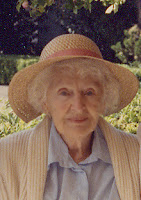Above are some neighbors of ours.
After eating the entire understory of northeastern forests, they and their friends have relocated to the suburbs.
My neighborhood had few of these residents about 10 years ago. They have big brown eyes and gentle demeanors. They are quite attractive, and they do not throw noisy parties.
Now our neighborhood has more of them -- and I suspect a number of their cousins also have settled in areas nearby. Our state, which had virtually no deer 100 years ago, now is home to an estimated 200,000 deer.
There are annual deer hunts to cull the herds in forests and reservations, but nobody, including me, has suggested hunting in suburbs. My guess is these animals plan to stick around for the long haul.
The only real complaint I have about them is their effect on my garden.
Landscaping in Deer Country
I know two families who have no trouble with deer. Both erected six-foot fences surrounding their flat properties many years ago. Their gardens abound with hybrid shrubs, decorative annuals and even flowers.
Six-foot fences are no longer permitted in our town, and they wouldn't help my situation anyway because deer could jump over such fences from the upslopes in our next-door neighbors' backyards.
So I try to plant things that deer don't like to eat.
It used to be that garden publications ran lists of "deer-proof plants. That stopped some years ago when deer began to eat many of the plants on the lists.
Now there are shorter lists of "deer-resistant plants," which are accompanied always by warnings that the deer haven't read those lists. If hungry enough, a deer family will eat just about any herbaceous specimen.
My Garden
For years now, I have studied deer-resistant plant lists and consulted our garden guy about what to plant in the yard.
Viburnum is one such plant, a lovely bush with spring flowers that is common in my neighborhood. Below is a viburnum.
And here is a picture of a viburnum that the garden guy suggested for our back yard. You will notice the difference.
I have another viburnum that looks just like this one. Both are surrounded by mulch that is pocked with hoofprints.
Another old "deer-resistant" staple is spirea, which used to be regarded as an uninteresting perennial good only for odd garden corners at the back of planting beds. Now homeowners plant spirea in bulk in hopes of warding off hungry deer.
One reason spirea are not highly prized is that they lose their leaves in winter. Here is one, probably four feet tall, whose owner is pulling out dead branches at the beginning of the winter season. By spring it will sprout thick green or yellow leaves, and perhaps even some white flowers.
Below is a spirea by our outdoor deck. It used to be about the same size as the one above. Now it's about 12 inches tall.
A couple times, I spied deer nibbling on the spirea and chased them away. They just kept coming back. I have 10 other spirea that look pretty much the same.
Alternatives
Gardening in deer country is not for the faint of heart. I have investigated three alternatives and settled on one.
1) Barrel cacti. Several are shown in an attractive grouping below. They are a nice green color and grow fast. Their sharp spines surely would discourage deer from tasting the cactus flesh, which reportedly has a bitter taste to boot. In spring, these cacti blossom out with bright yellow and orange flowers at their centers, which would be difficult for our woodchucks to reach and consume.
(Woodchucks LOVE flowers, by the way. Don't let me get started about the enormous potted chrysanthemum they stripped overnight several autumns back.)
Unfortunately, the weather here gets too cold and is too rainy -- nothing like that of the Sonoran dessert -- for barrel cacti thrive in my garden.
So it was on to
2) Deer spray. Two months ago, our library hosted a well-attended presentation on deer-resistant plants. Long story short -- there are many plants that are deer-resistant until they aren't. Then you have to start again.
A local entrepreneur attended to promote his company, which rids gardens of deer by regular applications of spray containing a smell that is obnoxious to deer. He offered a free first spray application, likely presuming that afterward customers would be hooked and would sign up to spend a couple thousand dollars a year for refresher sprays.
My reaction was that we already spend too much money on gardeners, lawn mowers, leaf blowers, fertilizer preparations, gutter cleaners and a tree service.
At some point, you just have to say no.
My new plan is
3) Deer nets. These unobtrusive black nets apparently interfere when deer try to sink their teeth into attractive foliage. A friend of mine has used these for several years, and she actually has normal-looking hydrangeas in her yard. Pretty impressive.
Home Depot sells deer netting in four-foot wide rolls of about 70 feet. So I'm going with that. All I need is 10 or 12 rolls of the stuff and some free time between now and the first frost.
Wish me luck.



































